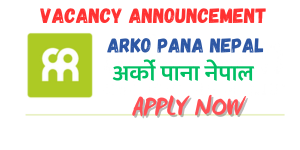Perhaps, the week of mid December of 2022 in the Nepalese Christian world, got into unnecessary debate on the the numbers of Churches and committed Christians. The social media walls are sending conflicting messages and users are

taking their positions with their own say. If we uphold the necessity of freedom of expression, its absolutely okay to see people’s acceptance or even rejection of what has come out as ‘Nepalese Christian data’ yet seeing on the real ground about who and what intention is actually provoking from behind to criticize so quick before the data on their hands makes me to think twice.
The Nepalese Christian Community Survey (NCCS) team, a joint venture of National Churches Fellowship of Nepal (NCFN) and Nepal Christian Society (NCS) took almost three years to bring its work in public claiming 7,758 churches and 683,261 Christian population in the country, including sex, age and overseas short term migrants. For me, this data is a “Near-to-Fact” scenario about Christian presence in Nepal. Why is this not a 100% data? Because the Coordinator Dr Krishnaman Shakya while presenting the work in a concerned gathering of Christian leaders in Kathmandu on 15 December 2022, admitted that the data wouldn’t claim a cent percent accurate due to the unavoidable limitations.
Though few people are standing against the survey results, and furthermore throwing unnecessary blames on NCCS team, the effort was itself reliable in many ways. There were 23 senior personalities comprised of senior leaders and denominations/church groups heads, who served in the advisory body. The steering committee was formed of the experts having already been involved into various of research works. The office and executives were well-equipped. The report says that more that 250 local volunteers were mobilized, who used online data-entry technology that tagged the locations wherever they reached physically. Since this is the kind of first attempt by the national resources and expertise, reliability of the result should not be questioned without careful evaluations. The fact is that the team has diligently worked, followed the methods and technique and volunteer mobilization.
I am totally satisfied of what came as finding. Not because of my name is associated with NCS or NCCS, but being one of the research-driven author and public concerned communicator I accept this as the stepping stone on which we could begin a lot towards further research works and mission strategies. It is also admitted that the data only includes mainstream Evangelicals, Penticostals and Catholic Christians, and excludes some of cults within the so called Christian community which do not fully like to flow with the mainstream. This might reduce the number in total because it excludes the extreme cults and false teaching congregations, but its okay because the primary intention of the data-bias is not hidden.
This work also provides us an open ground to do a deeper comparison with other efforts such as government data and some of the independent efforts for the same. It grabs my interest that it went on parallel along side to Central Bureau of Statistics (CBS) under Nepal Government which will also bring out the number of the Christians in the country in few months. Let us wait, what the CBS will publish and see whether the data tailors together.
I am not surprised to read the ‘denial statement’ published by Federation of National Christian in Nepal (FNCN), because it was so anticipated from the beginning. The world should know that a handful leaders in that organization acted as an antagonist to the project right in the starting stage of seeking consent from stakeholders. Both NCS and NCFN were asking them to carry on the project as trio-effort together, which would not only collect the data but definitely create a space towards unity and peaceful coexistence. But they independently formed a separate task force claiming that FNCN was the only eligible body to carry such project, rejecting others were no one to go there and do a counting. The bitter truth is that some of those people have left the organization due to some reasons, who were then created a counter-project and much more they did to spread bad news against, even propagating falsehood that millions of money was raised, and so on. But now they admit why it was opposed so badly! We heard many of the volunteers were mistreated while carrying the assignment. Obviously known that most of those who are now standing prejudices were not favoring from the very beginning. So they do not care for the numbers that revealed way down than they were exaggerating, bothers their ego, thus vested a bad political interest is under the sun! Rather, it would be much acceptable if all stop talking against and acknowledge as if the good start has been established, and anybody could take step furthermore and do better in days to come.
My appeal is that let all first look at the data itself, check and verify whether the tools and sources were reliable, then speak their comment. It would be a healthy was to tell the team, what is still lacking. Do not be too quick to criticism before having a copy in your hand. Indeed it would be a shameful act as you judge the cover and given numbers. The work will tell you much more than its’ cover pages.
So friends, accept that this is a Near-to-Fact result, go ahead and further try to bring a cent per cent data by yourself, admit your limitations, work diligently bringing out the accurate data, identifiying releable resources but seeking the cooperation from other stakeholders like NCFN and NCS and also other national bodies. One can always take the chance to improve.
Comment is appreciated: khanal2010@live.com






















Discussion about this post